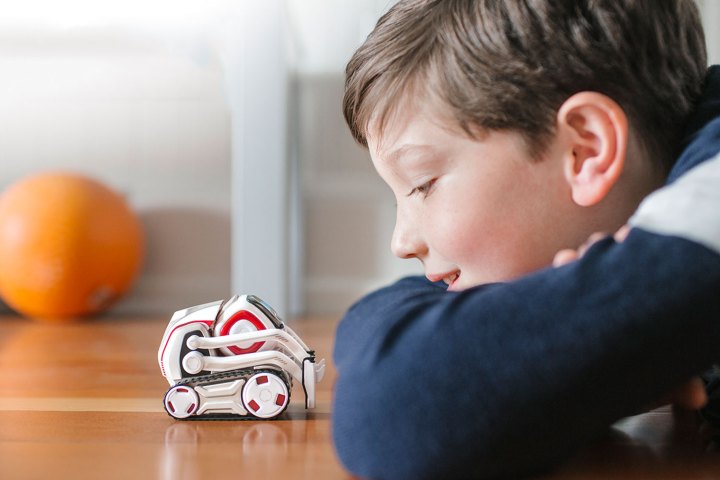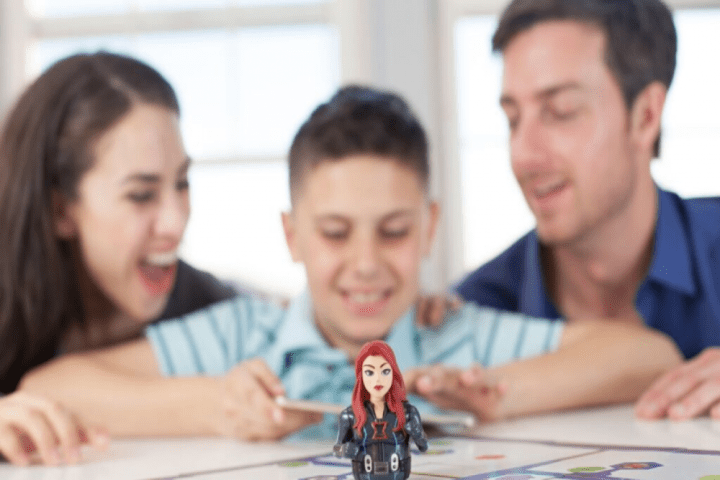
What is STEM, and what are STEM toys?
STEM has enjoyed considerable attention in recent years, but it’s an acronym that applies loosely to Science, Technology, Engineering, and Mathematics. Boiled down to the basics, STEM toys tend to emphasize creativity, logic, problem solving, and experimentation. Great STEM toys don’t just lecture kids, but engage them — they guide kids through lessons and activities in novel ways, and go the extra mile to reward their achievements.
The Best STEM toys
Circuit Cubes ($60)

If you’ve ever taken apart an old gadget as a kid, you probably know how educational it can be. But tearing old computers and TVs to shreds isn’t exactly the safest pastime. Luckily, there’s Circuit Cubes, a Lego-like building set that does a pretty good job approximating the experience. It consists of components made of transparent material, so that kids can see their inner workings. It comes with building instructions for cars, trucks, bikes, bridges, Ferris wheels, and more.
Circuit Cubes has its roots in education. It’s the debut effort of longtime educators Nate MacDonald and John Schuster, who spent years developing lesson plans with an basis in STEM. Each kit ships with a motor cube that drives a gear shaft at 1,000 RPMs, an LED module that lights up brightly when attached to a completed circuit, and a rechargeable battery that lasts up to one hour of active play (and three days on standby). Future versions will allow kids to control modules with a smartphone or tablet via Bluetooth.
Lego Boost

Danish-based toy maker Lego launched its own take on STEM toys at the Consumer Electronics Show in January: Lego Boost.
Boost ships with more than 840 Lego bricks, a downloadable app, instructions and coding commands to create five possible Lego creations, including a functional 3D printer and a playable electric guitar. Other Boost bricks include a combination color and distance sensor and interactive motor, and the Move Hub, which packs two input and output ports, a six-axis tilt sensor, LEDs, and a Bluetooth radio that pairs with a smartphone running Boost’s companion app.
The Boost app teaches kids how to build animals and robots with the kit’s included pieces. It boasts activities like a Western-style one that outfits Boost ‘bots with handlebar mustaches and shooter guns, and a Tamagotchi-style game that has kids care for a Lego cat. It also walks kids through coding basics, allowing them to progress as they master modules.
Perhaps best of all, though, Boost works with existing Lego bricks. A “creative” mode lets kids start with one of three different bases — a walking base to create a robot animal, a driving base for vehicles, and an entrance base for castles and forts — and build whatever they want on top.
Osmo Coding Jam ($60)

Ever since Osmo, an augmented reality platform that uses the iPad’s front-facing camera to blend digital and real-world objects, made Time’s list of Best Innovations in 2014, the eponymous startup has been chipping away at improved kits. Its newest — Coding Jam — is one of the most impressive yet.
Osmo Coding Jam blends coding education with music. Like Osmo kits before it, kids download a companion app for iPad and interact with menus using physical cardboard pieces. Once they boot up the app and choose a randomly generated “stage name,” they’re ready to start composing short songs with Osmo’s cardboard block system.
Coding Jam is about more than music. The new Osmo kit, which was based in part on MIT research into the efficacy of tangible, physical teaching tools, puts ideas like “looping” and “sequencing” into musical terms that kids can understand. Better yet? The Osmo team’s already working with educators in 20,000 schools, and plans to publish formal lesson plans in the coming weeks.
Cozmo ($180)
Cozmo, the miniature toy robot that looks kind of like a makeshift forklift, was one of 2016’s coolest toys. The AI-powered companion learns names and faces, plays games, and even develops a personality as it gets to know you better. But it’s also a platform for education.
Code Lab, a visual programming feature built into Cozmo’s companion app for smartphones and tablets, lets kids reorder sequences of digital blocks to create basic programs and learn robotics basics along the way. It’s designed on Scratch, the sprite-based language developed by MIT’s Technology Media Lab, and tasks kids with using four different kinds of blocks — movements, actions, events, and animations — to program the robot. A series of tutorial-like challenges, meanwhile, teach Code Lab’s fundamentals.
It’s largely a drag-and-drop affair — publishing a program is as easy as pairing at least two blocks and tapping the green “play” icon. But special categories of blocks allow for slightly more complicated routines, and an advanced mode launching later this year will add support for math functions and other features.
Ozobot ($100)

Cute, colorful robots are one way to pique kids’ interest in technology, and the creators of Ozobot pretty much have that concept nailed. The startup’s robots, which are now in 2,000 schools, look a little like miniaturized Roombas with transparent domes and color-changing LEDs. They’re programmed using Ozoblockly, a language based on Google’s kid-friendly Blockly, and it’s designed to adapt to various skill levels.
Evo, the newest generation of Ozobot, ships with a cardboard playing field and pre-programmed games and activities. It’s social, too — if kids plop down one or more additional Evo robots, they’ll automatically connect to one another and let owners exchange messages, share programs, or synchronize their units’ movements. And it’s customizable — kids can swap out the Ozobot’s transparent top for skins like Captain America or Iron Man, which come with custom sound effects and behaviors.
Sony Koov

Koov, a robotics kit by Sony’s Global Education division, is designed to teach kids robotics fundamentals through a combination of challenges and activities. It ships in two starter kits consisting of seven interlocking blocks (including actuators, motors, proximity sensors, accelerometers , and a Koov Core), and comes with a companion app that serves as a hub for Koov activities.
Kids code Koov using a Blockly-like visual programming language via the Koov app, which boasts more than 30 hours of onboarding material. There are 35 different lesson plans for them to follow, each focused on a single robot design and sequence of digital programming blocks, and sharing features that lets kids share, like, comment on, and publish their favorite creations. Koov’s social networking features let users choose from a gallery of avatar pictures, snap pictures of their inventions using the Koov’s photo tool, and comment on, “like,” favorite, and download the programs they want.



